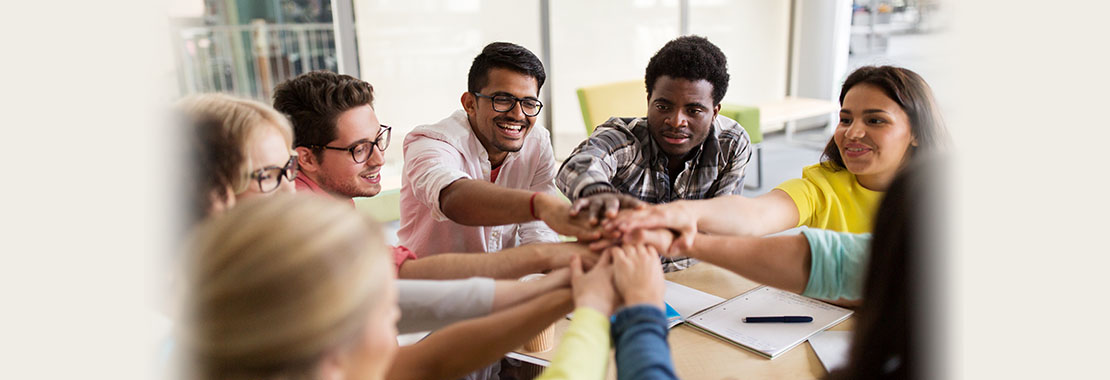Class Ice Breakers
Polar bears break the ice to survive. Teachers break the ice to thrive. Join this interactive, high-energy webinar and explore ways to use icebreakers and topic starters to socialize, stimulate, motivate, and prime your students for success. Participants will leave with practical strategies they can immediately implement to move students from passive observers to active participants in their education.
Click here to watch this video in full screen.
Attached to this post are both the slides and a Q&A for this presentation.
Presenter: Shawn Orr, Director of the Center for Innovation and Teaching Excellence, Professional Instructor Communication Studies, Ashland College
Shawn Orr has worked in higher education for over 25 years as a Business and General Education professor, Department Chairperson, academic advisor, Dean of Faculty and Director of College Success courses. She’s taught more than 20 different courses in the business, management, composition, humanities and communication areas.
Shawn was the 2011 North Central Educators Association Educator of the Year and has been actively involved in working with accreditation, assessment, online learning, curriculum design and curriculum redesign in higher education. She has prepared, developed and delivered over 200 workshops, webinars, presentations, training seminars and keynote addresses across the country on student success, advising, online and hybrid learning, portfolio development, retention strategies, service learning, technology, generational teaching and learning, flipped classrooms, apps to engage students, active teaching and learning strategies, experiential learning and 21st century skill development.
When people lived in colder climates, often times they had to break through the ice of rivers or ponds to draw water. Additionally, boats saw the need to use an ax or other tool to break the ice. Thus, we see breaking the ice was a means to remove an obstacle that prevented progress to a destination. Our students have entered our classrooms on a destination to success. Ice breakers are one way to help create a warm, inclusive environment.
Some faculty only use ice breakers for the first day. I use them every week.
Thanks to professor Essie Childers of Blinn College
In an article in Faculty Focus (“First Day of Class Activities that Create a Climate for Learning) by Maryellen Weimer, she posits some excellent first day activities. I have listed two below that would work with large groups.
First Day Graffiti — This is an adaptation of an activity proposed by Barbara Goza in the Journal of Management Education in 1993 (Graffiti Needs Assessment: Involving Students in the First Class Session).
Flip charts with markers beneath are placed around the classroom. Each chart has a different sentence stem. Here are a few examples:
- “I learn best in classes where the teacher ___”
- “Students in courses help me learn when they ___”
- “I am most likely to participate in classes when ___”
- “Here’s something that makes it hard to learn in a course: ___”
- “Here’s something that makes it easy to learn in a course: ___”
Students are invited to walk around the room and write responses, chatting with each other and the teacher as they do. After there are comments on every flip chart, the teacher walks to each one and talks a bit about one or two of the responses. If you run out of time, you can conduct the debriefing during the next session.
Syllabus Speed Dating — Karen Eifler, an education professor at the University of Portland, designed this activity. Two rows of chairs face each other (multiple rows of two can be used in larger classes). Students sit across from each other, each with a copy of the syllabus that they’ve briefly reviewed. Eifler asks two questions: one about something in the syllabus and one of a more personal nature. The pair has a short period of time to answer both questions. Eifler checks to make sure the syllabus question has been answered correctly. Then students in one of the rows move down one seat and Eifler asks the new pair two different questions. Not only does this activity get students acquainted with each other, it’s a great way to get them reading the syllabus and finding out for themselves what they need to know about the course.
Introductions – Lights, Camera, Action
Thanks to: Mia Taylor of Houston Community College
Here’s how I describe my activity to students:
To break the ice let’s have some fun and design a movie poster that reflects our personality.
The purpose of this activity is to:
- introduce yourself and get to know your classmates and
- use and familiarize yourself with the LMS Discussion features.
Assignment Instructions
- Visit Big Huge Labs, http://bighugelabs.com/poster.php, and create your own movie poster. This movie poster should reflect something about you. Include the following elements in your poster:
- Image (Pick an image that reflects you or something you aspire to.)
- Movie Title (What do you want your movie to be called?)
- Tagline 1 & 2 (What is the main theme or catchy phrase for your movie?)
- Acting Credits (Who is important to you at home, school, work, etc.?)
- Production Credits (What is important in you at home, school, work, etc.?)
- Note: Share only what you are comfortable with sharing.
- Save the image to your computer.
- Reply to this post with the following (instructions for replying in Canvas Discussions):
- Your name, occupation and program/major you are studying (or interested in).
- Describe why you chose the image, title and acting/production credits for your movie poster. Explain what it reflects about you?
- If you want, share your favorite links and other relevant information to help us get to know you.
- After completing your own post, interact with TWO of your classmates and help us all get to know one another.
- For full points you must thoughtfully respond to at least TWO other classmate’s posts.
Click the Download link to get a PDF of the slides shown in Professor Shawn Orr’s video presentation.

